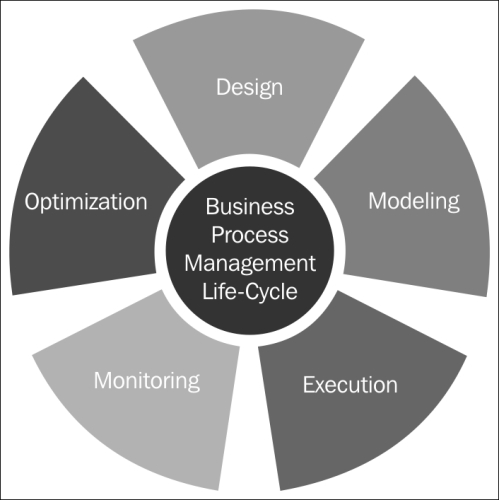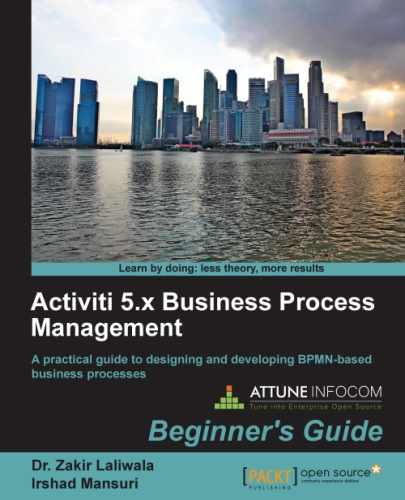Business people are used to visualizing the business processes through graphical representations such as flowcharts and UML diagrams. However, when it comes to the execution of the business process, there is a technical gap between the design of a business process shown in the flowchart and the language that executes the business process, for example, WSBPEL.
In the previous chapter, we had an overview of Activiti, covering topics such as downloading and installing Activiti and creating a simple process within Activiti. In this chapter, we will understand what BPM is, its lifecycle and elements, and how to create a business process using the BPM elements in the Activiti Modeler.
In this chapter, we will cover the following topics:
- Business Process Modeling (BPM)
- Modeling principles and lifecycle
- BPM standards
- BPMN elements
- BPM using the Activiti Modeler
- Importing and exporting a model
- Deploying a model to the Activiti Engine
BPM, with respect to system engineering, provides methods and techniques to make a business process more efficient, adaptive, and effective to accomplish business tasks. We will use the BPMN 2.0 modeling notations for designing our business process with the Activiti Engine. It provides a comprehensive approach to aligning an organization's business process as per the client's requirement. With the help of BPM, organizations can be more effective, efficient, and capable of accepting changes rather focusing on a traditional hierarchical management approach.
The creation of a business process comprises the five phases of business process management, commonly known as the BPM lifecycle. The five phases are as follows:
- Design
- Modeling
- Execution
- Monitoring
- Optimization
Each phase is designed to implement a successful process solution.
With the help of the BPM lifecycle, one can understand that implementing a business process is an ongoing process due to the changes occurring within the business environment. The five phases of the BPM lifecycle are as follows:

The design phase of a lifecycle is responsible for the identification and design of a business process. The areas focused on within this phase are identifying activities, analyzing possible changes within the organization, defining service-level agreements, and specifying process details, such as actors, notifications, and escalations, within the business process. The main purpose of this phase is to ensure that a correct and efficient theoretical design is prepared. This phase belongs to the process owners who are deciding the process flow for the organization.
Modeling is the second phase of the cycle; it's where the business process is validated and fully specified. In the design phase, the theoretical design is prepared, whereas in this phase, the theoretical business process is designed using various BPMN elements. This phase is mainly the responsibility of system analysts and integrators.
Once the theoretical design is transformed into a model, it can be implemented in the business process application. Now, it's time to automate the execution of the business process. This is the phase where the services are defined to automate the business process. The languages used to create the services are WSBPEL and BPMN 2.0. This phase belongs to the developers who are developing the business process.
The monitoring phase keeps track of the individual processes. Performance monitoring for each and every process can be provided statistically, and the states of the process can also be maintained. In the monitoring phase, problems within a business process can be identified and corrective steps can be taken to improve it.
The optimization phase is the last phase of the lifecycle. In this phase, the performance information of the process is fetched from the monitoring phase and improvements within the process and changes in the business requirement are identified. Once the optimization phase is completed, the business process again goes into the design phase and the cycle is completed.
